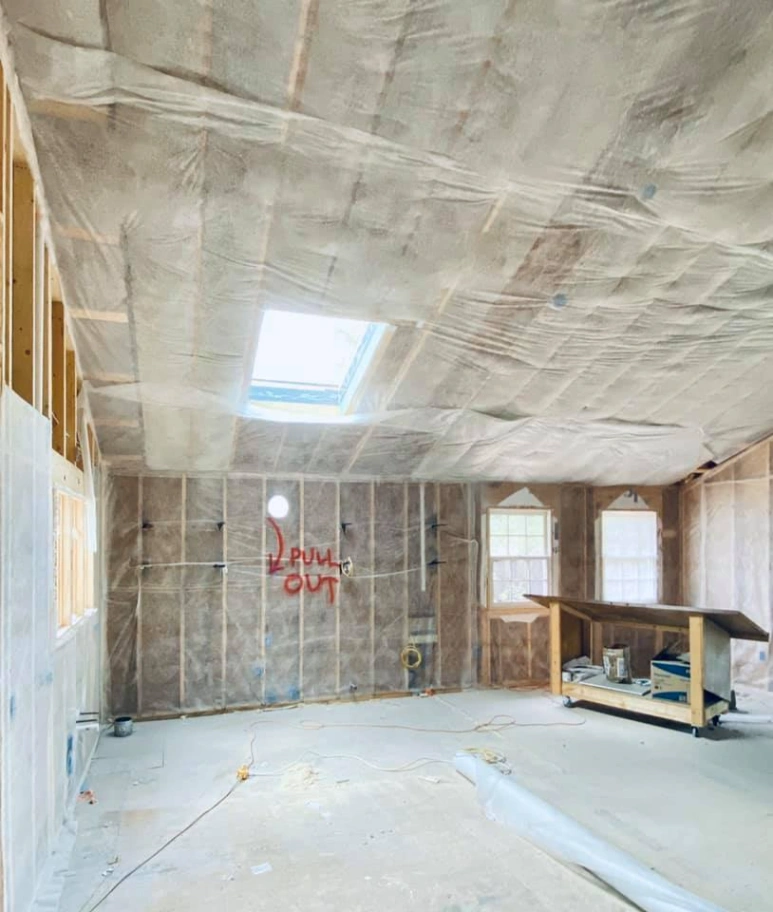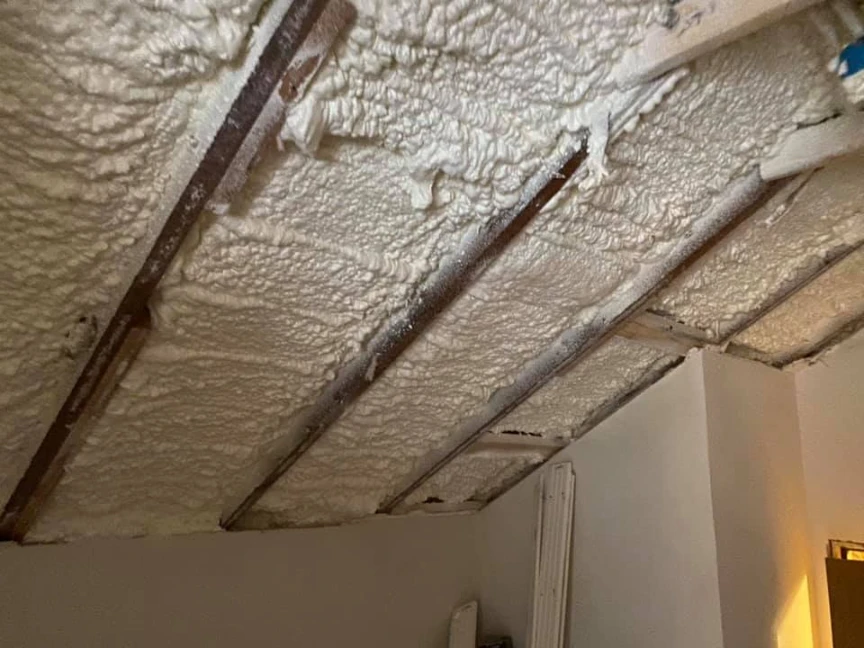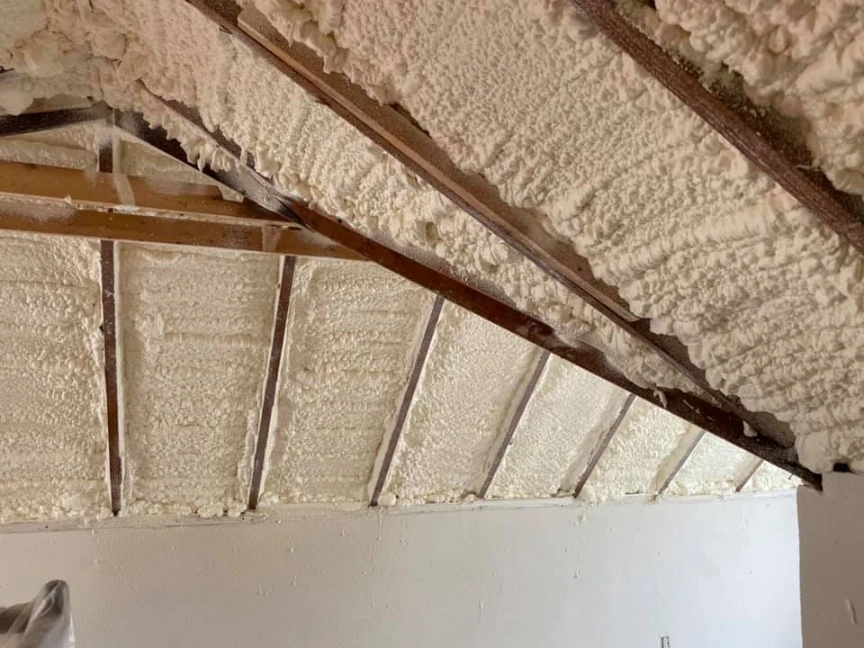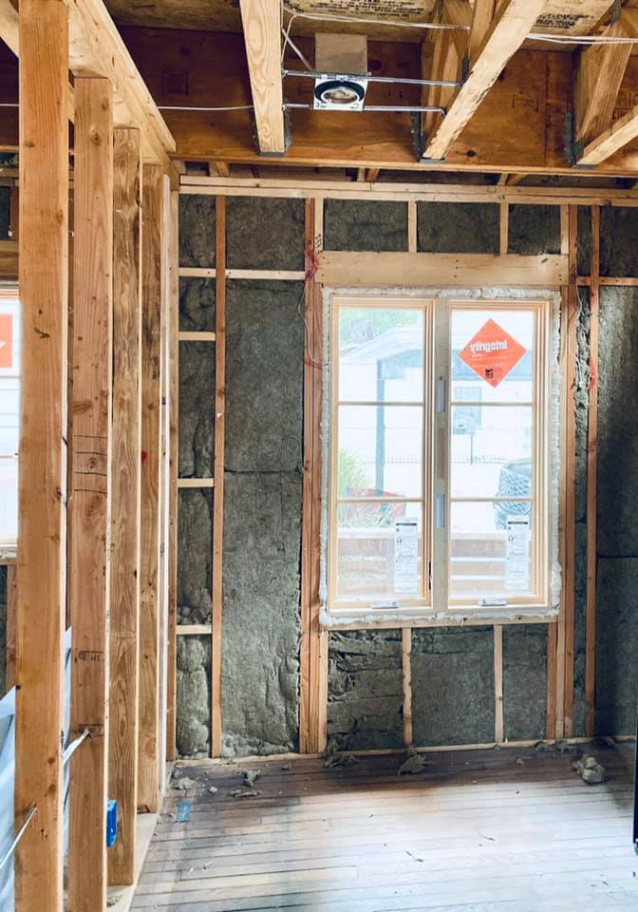Proper commercial spray foam insulation solution eliminates hot and cold spots in workplaces by creating a continuous thermal barrier that controls heat flow and stops air leakage. When a building is insulated correctly, it forms a complete envelope around the conditioned space. This envelope resists the transfer of heat through conduction and convection, which are the primary ways temperature inconsistencies develop. By preventing outside air from infiltrating and inside air from escaping, a well-insulated building maintains a stable, uniform temperature from one office to the next, regardless of the weather outside.
This comprehensive approach ensures that the heating, ventilation, and air conditioning (HVAC) system can operate as designed, distributing air evenly without having to overcompensate for areas compromised by heat gain or loss. Stellrr Insulation & Spray Foam provides this guide based on years of experience in diagnosing and solving thermal comfort issues in commercial buildings. The following sections detail how this process works, the materials involved, and the benefits beyond just comfort.
The Root Causes of Temperature Imbalance
Hot and cold spots are more than a minor annoyance; they are symptoms of underlying performance issues in a building’s structure. These temperature differences usually stem from a few common problems.
- Air Leakage: Gaps and cracks in the building envelope are a primary culprit. A report from the National Institute of Standards and Technology (NIST) highlights that air leakage can account for a significant portion of a building’s heating and cooling costs. Air moves through unseen gaps around windows, doors, electrical outlets, and junctions between walls and the roof, carrying its temperature with it.
- Insufficient or Degraded Insulation: Older insulation can settle, compact, or degrade over time, leaving voids in walls and ceilings. In these uninsulated pockets, heat can easily move through the building materials, creating a noticeable cold spot in the winter and a hot spot in the summer.
- Thermal Bridging: This occurs when a more conductive material allows heat to bypass the insulation. Steel studs in a wall, for example, can act as a thermal bridge, transferring heat much faster than the insulated cavities around them. This is often visible with thermal imaging, showing distinct lines of heat loss or gain.
- Solar Heat Gain: Large, untreated windows, particularly those facing south or west, can let in a tremendous amount of solar radiation, overheating specific rooms while others remain cool.
Creating a Consistent Thermal Environment
Achieving a uniform temperature throughout a workplace requires an insulation strategy that addresses both heat flow and air movement. Different insulation materials offer varying levels of performance in these two areas.
Spray polyurethane foam (SPF) is particularly effective because it performs two jobs at once: it insulates and air seals. When applied, the foam expands to fill every crack and crevice, creating a monolithic barrier that adheres directly to the substrate. This eliminates the gaps and seams common with traditional insulation like fiberglass batts, which can allow air to move freely through and around them.
The following table compares the typical characteristics of common commercial insulation types.
| Insulation Material | Air Sealing Capability | Typical R-Value (per inch) | Key Benefit for Temperature Control |
|---|---|---|---|
| Closed-Cell Spray Foam | Excellent | 6.0 – 7.0 | Creates an all-in-one air, vapor, and thermal barrier. |
| Open-Cell Spray Foam | Excellent | 3.5 – 3.8 | Fills cavities completely to stop convective air movement. |
| Fiberglass Batts | Poor | 3.1 – 4.3 | Inexpensive for standard cavities but requires a separate air barrier. |
| Blown-In Cellulose | Good | 3.2 – 3.8 | Conforms to spaces but can settle over time, creating gaps. |
| Rigid Foam Board | Good (at seams) | 4.0 – 6.5 | Effective for continuous exterior insulation, but must be sealed at joints. |
As the table shows, materials with inherent air-sealing properties are far more effective at preventing the air movement that causes hot and cold spots.
Bonus Tip: When insulating metal buildings, it’s essential to use an insulation that controls for condensation, like closed-cell spray foam. The foam adheres directly to the metal panels, preventing warm, moist interior air from reaching the cold metal surface and condensing.
The Effect on HVAC Performance and Energy Bills
When a building has a consistent internal temperature, the HVAC system benefits directly. Hot and cold spots force a system to work harder and run longer, trying to satisfy thermostats in zones that are constantly losing or gaining heat. This leads to short cycling, increased wear and tear, and higher energy consumption.
By creating a properly insulated and air-sealed envelope, the thermal load on the building is drastically reduced. The HVAC system can maintain the desired temperature with shorter, less frequent cycles. The U.S. Department of Energy states that air sealing and insulating can save a significant amount on heating and cooling bills, and this holds true for commercial properties as well. A stable environment means the equipment doesn’t have to fight against constant infiltration or heat transfer, leading to direct savings and a longer lifespan for the machinery.
Things to Consider Before Upgrading Insulation
Making an informed decision about insulation requires a clear understanding of the building’s current state and long-term goals.
- Conduct a Building Assessment: Before selecting a product, identify where the problems are. A professional energy audit, often using tools like a blower door test or an infrared camera, can pinpoint the exact locations of air leaks and insulation deficiencies. This diagnostic step ensures that the solution addresses the actual cause of the problem.
- Match the Insulation to the Application: Not all insulation is right for every situation. For example, open-cell spray foam is great for sound attenuation and filling wall cavities, while closed-cell spray foam is ideal for roofs and foundations where moisture resistance and structural strength are needed.
- Understand Building Codes: Local building and energy codes dictate minimum R-value requirements for different parts of a building (walls, roof, foundation). Any insulation upgrade should meet or exceed these standards to ensure compliance and performance. The International Energy Conservation Code (IECC) provides the baseline for most local codes.
- Balance Insulation with Ventilation: An airtight building is an energy-efficient building, but it also needs proper mechanical ventilation to maintain healthy indoor air quality. Sealing up a building without considering fresh air exchange can lead to the buildup of indoor pollutants. A balanced approach includes both a tight envelope and a controlled ventilation system.

Achieve a Uniformly Comfortable and Efficient Workspace
Eliminating hot and cold spots is about creating a high-performance building envelope. The insulation solution lies in choosing the right material and ensuring it’s installed correctly to form a continuous barrier against both heat flow and air leakage. A workspace with a stable temperature is not only more comfortable but also more energy-efficient and productive.
Before moving forward, take the time to evaluate your building’s specific challenges. A thorough assessment will reveal the most effective path toward creating a uniformly comfortable environment that benefits everyone inside.
Get a Professional Assessment
Understanding the unique thermal dynamics of your commercial property is the first step toward a permanent solution. For a detailed evaluation and to discuss options tailored to your building, contact the team at Stellrr Insulation & Spray Foam. You can reach a specialist by calling (512) 710-2839 to schedule an assessment.
Sources
- National Institute of Standards and Technology (NIST) – A detailed report on the impact of air leakage on energy consumption in commercial buildings.
- U.S. Department of Energy – Provides information on how air sealing and insulation contribute to significant energy savings for homeowners and businesses.
- International Code Council (ICC) – The organization that develops and publishes the International Energy Conservation Code (IECC), which serves as a model for local energy codes.
FAQS
Why does our top-floor office get so much hotter than the rest of the building?
This is almost always due to an under-insulated roof. The roof absorbs a massive amount of solar radiation during the day, and without sufficient insulation, that heat radiates directly into the space below. Proper roof deck insulation stops this heat transfer at the source.
Can insulation reduce noise from outside or between offices?
Yes, certain types of insulation are excellent for sound control. Open-cell spray foam, in particular, has fantastic sound-dampening properties. Its soft, dense structure absorbs sound waves, helping to quiet conference rooms, private offices, and spaces near busy roads.
Will we need to shut down our business for an insulation upgrade?
Most insulation retrofits can be completed with minimal disruption. For many applications, the work can be done in sections or during off-hours to avoid interfering with daily operations. Professional contractors are experienced in working within active business environments.
What is the expected return on investment for new insulation?
The return on investment comes from several areas: lower monthly energy bills, reduced maintenance on HVAC equipment, and improved employee productivity. While the exact payback period depends on the project’s scope and local energy costs, the savings begin immediately and continue for the life of the building.





